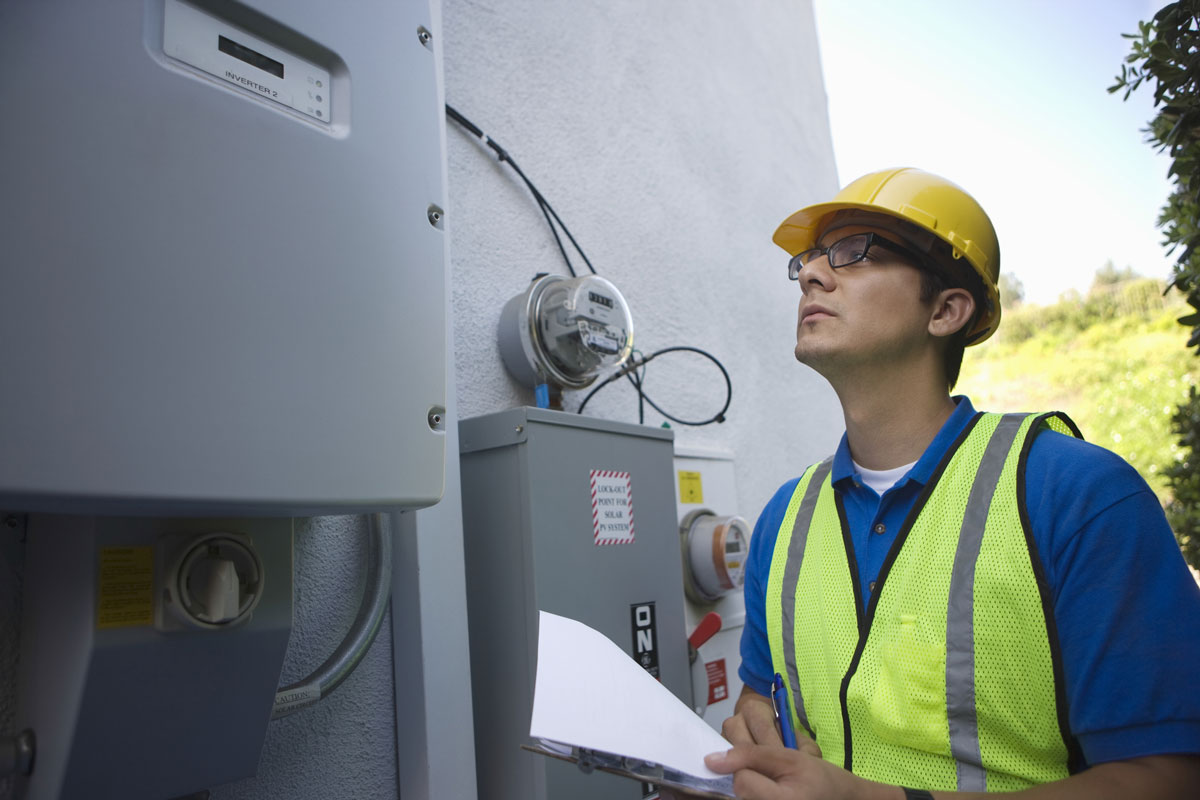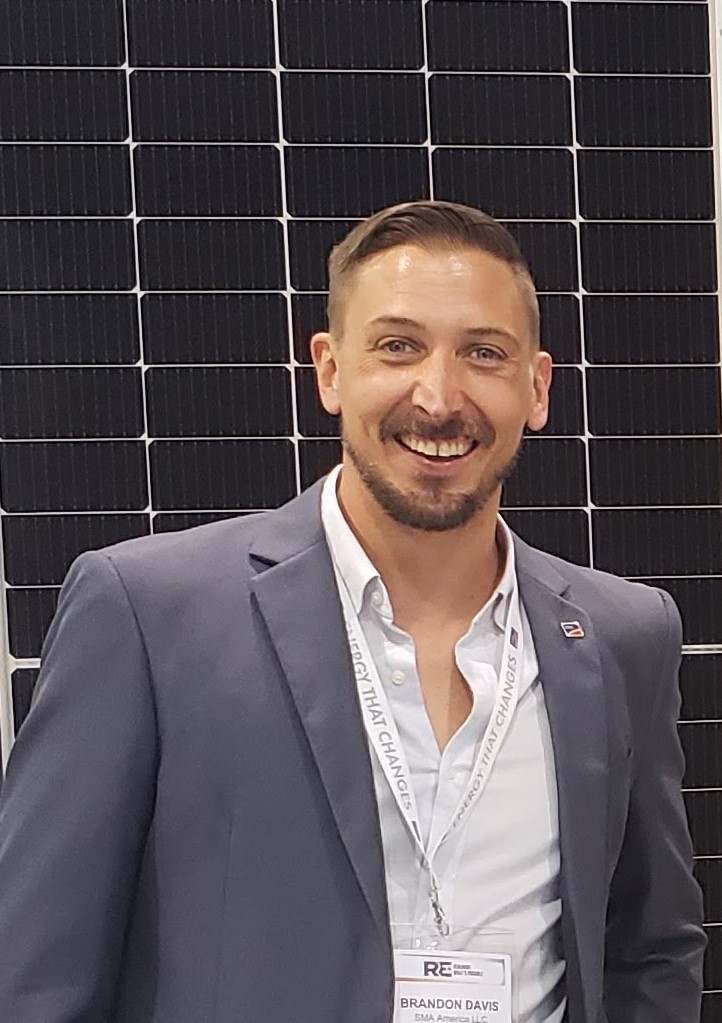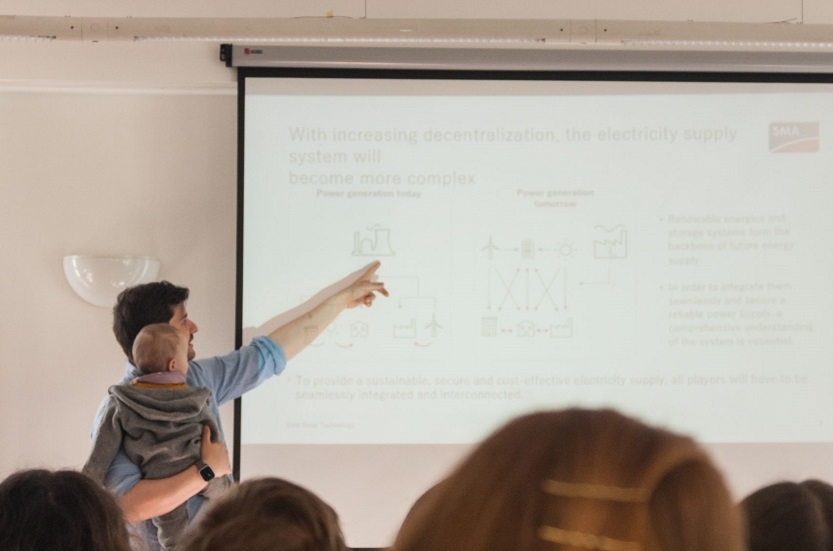Tech Talk: Five tips for AFCI troubleshooting

It’s something installers hate to hear and hate to troubleshoot: the dreaded DC-side arc fault. Rarely in solar can such a small phrase bring so much ambiguity and require so much effort to find and fix. Yet over the course of a career, all solar installers will find themselves searching inside junction boxes, combiners and on top of roofs to find that pesky fault.
Sometimes they’re caused by simple installation mistakes like not stripping enough wire length or improper torque. And then there are times when the install was perfect, but the local rodent population fed itself on PV wire long enough to bring down the system.
One thing to remember is that although the inverter has found an arc in the system, it’s often acting as the bearer of bad news. Like the warning lights in a car, the inverter has found a problem that needs to be addressed but is likely outside of the inverter itself.
Tips for finding the arc
- Safety first. Make sure to turn off the AC breaker and, if applicable, turn off and lock-out the AC disconnect switch to ensure the inverter is not producing any power. Once the inverter is shut off, wait five minute before opening any covers to ensure the capacitors have time to bleed out excess power.
- Open the inverters and any combiner boxes to check for proper torque on all DC terminals. A common test here is to tug each wire to see if any are loose or pull out entirely. If any wires are suspect, tighten them down to proper torque specs.
- While the inverters and combiner boxes are open, visually inspect the insulation on the DC conductors where they land. The insulation should be stripped back enough so the wire is solely clamped down, without any insulation touching the terminal. The length of stripped wire is different with each application; for example, with the Sunny Tripower, the DC terminals require .75 inches of insulation to be stripped back.
- Visually inspect the homerun connectors going back from the combiner boxes to the modules for each string. The connector-to-connector points for the first and last modules in each string should be easy to find. The homerun wire connector is normally cut and crimped onsite to match the length requirements, giving it a higher probability for causing a fault due to improper crimping.
- Walk the array while looking for signs of arcing. Closely inspect the wiring under the modules and inside junction boxes. Damaged wires from rodents are just one example of what to look for. This can be taxing depending on the array location and is often the most difficult and most important step. Make sure to look at the MC4 connectors between modules for a full connection; partial connections that aren’t fully closed are a common cause of arcing.
One thing to remember: an arc fault is not the same as a ground fault, so make sure to follow different testing procedures for ground faults. Once you’re comfortable that everything is checked and in good condition, turn on the AC disconnects or breaker and see if the inverter detects any faults.
Still seeing a fault or in need of deeper troubleshooting tips? Call our Service Line at 877-697-6283 from the system site and we’ll lend a helping hand.




Hi MIke,
I sent the bird event as you ask and also updated my inverter so it should reset itself on arc fault shut down. Sorry I could not get the system to export the video with the time stamp in the video.
I wonder how many times the inverter will restart before it considers it an actual arc fault and stops restarting.
Jeff – Thanks for the video. I am interested why the log would show Rapid Shutdown has been triggered if you do not have rapid shutdown turned on. Have you contacted service about this? The new UL1699B Edition 1 standard allows for multiple restarts if the arc power is always limited below a certain threshold. If you see repeated AFCI errors, these should definitely be investigated as actual AFCI events.
I have a Sunny Boy 5.0-us running three strings and have had only two arc faults. The first was on string C about 6 Months ago and the second occurred this month and was on string A.
This last time I went back on the security cameras to look for anything that might indicate where or how this could happen and finally found the cause.
Birds….yes!
At the the exact time of the arc fault there was a small flock of birds whos shadows swept across the panels and somehow the ripple in the voltages set off the arc fault and shut down the system.
I would never have believed this if someone simply told me this but I did record the event from two separate cameras and confirmed the exact time with the event error.
Has anyone else noticed this issue?
Jeff – that is something I have never heard of! If you are open to sharing the video, we would love to see it. You can send it over to Training@SMA-America.com
I have a 7 year old sma5000tl-us-22 inverter that has “a” string is normal voltage, but “b” string has 0 voltage and no error code. Anyone have an idea what is happening and why.
Jeff – the TL-US-22 line has two independent MPPT inputs, each capable of connecting to two stings of modules. Are you certain that both MPPT channels are connected to PV strings? If so, another way to arrive at your situation is if there is a connector between the inverter and string “b” that has been disconnected. You can contact Service@SMA_America.com to help with troubleshooting.
my question , which type of protection necessary of pv installation , specially for fire protection.
when we will installed in the Industrial roof top, (metal sheet flash mounted installation system). Do you Have AFCI in stp 25000 TL and Core-1, 50KW ? This is necessary?
I am an electrician and I have a sunnyboy 5.0 us 5000, installed per instructions, PV hooked up to just A+ and A -, and Line1, N and Line2 hooked up, Ethernet plugged in, ground bars and cables hooked up.
the inverter was showing no signs of life when AC breakers where turned on. It only shows startup when the PV is making power…, then it shows as if its starting up, goes through the startup procedures and that is it.
Does it need to be commissioned first before taking ac loads?
if the PV is turned off with the breakers still on it turns off.
I have US wiring an 120 at each leg and also using a N wire to a Common ground block, the common and naturals are not isolated in the box.
Any help would be appreciated.
Mark
My 10 year old 7000 Sunnyboy works ok early in the morning or cloudy days…then when the sun is bright and output increases it begins cycle-ling with Disturbance Imax…some times it may run 10 minutes and other times keeps cycling. This is a grid tie, 3 post mount, 10 panels each array, 175 watt Sharpe panels. We have replaced almost all the connections on the panel feeds to the central connection on the middle array post.. We have metered the Grid voltage from the utility. Several electricians have looked and made tests (none were solar electricians). The problem began 2 months ago—no solutions yet.
What are the solutions for Arc Fault Protection for older inverters?
Please help out on the error i am getting on my SMA SUNNYBOY 7.7 US-41. A new installation all wiring are ok but when commissioned there is always error 1302 grid failure.
the AC out L1 terminal was connected to the L1 and the N and connected to sunny island SI6.0SH output in parallel to the loads whereas the sunny island produces 221V AC to the loads and to the sunnyboy Ac outlet L! and N all earthing connections done, still the inverter keep requesting for grid.
Please any help to solve this will be appreciated
I’ve got a SB3000TL-US-22 inverter with a secure power supply (SPS). Our local utility shut our power off two nights ago. Yesterday I attempted to use the secure power supply but it did not work. I followed these instructions: 1 – I switched the inverter’s circuit breaker to the “off” position; 2 – I switched the outlet socket to the “on” position. Then I plugged in an extension cord. While doing this, the display panel showed “AFCI self-check”, and then the display screen went blank. The SPS did not work. When I turned the outlet socket off, and then turned the inverter circuit breaker on again, the display panel shows the system is generating power, but the grid is off. What can I do to get the SPS system to work???
I have a sunny Tripower Core 62-US. I currently have a RED fault light on, we cleared the fault, how do I clear the fault on the inverter ya make the inverter go back to normal operating status??
I installed a 3.0 sma sunny boy but I don’t know if the inverter is working good because the green light is flashing slowly
And the data panel is dark for minutes and coming back for couple minutes.
I know the connection is good but is the first time I installing a sma.
I just want to know how or what’s the light we need on inverter to be sure if is ok?
Thanks.!
The Fans on the sma sb7000us inverter for some reason stop working, I’ve done the recommended test shown on the manual and on test mode they do work but when it goes back to normal they don’t work at all.
Does anyone have any Suggestions?
My 7.0 inverter gets an arc fault error every couple of days. Sometimes it will last a week, once even a month, but the average is 2-3 days. The installers have come back half a dozen times at least, came with a heat gun, checked all connections, and one time even replaced all the DC wiring. Usually it is string A, sometimes string C. Usually it is the same inverter, which has been replaced since the installer thought it might be that inverter, once it was another inverter. It is a carport mounted system in San Diego so no chance of rodents, snow, weather etc. Strange that it will start up and run for days every time they reset it. They tried lots of updates, calls to SMA, etc. System has been up for 6 months. It is getting really frustrating. My other system is microinverters and has never had any problems at all so I am new to this problem. Anyone have any ideas?
Hi, need help with my sunny boy 7000. The vintage is 2015 but I just installed it, I now need to get it connected to monitoring and the web.
Are there add on modules that can bring me up to 2018? Wi Fi module – for this older model?
Thanks,
Peter Banwell
If I experience an arc fault, is there a way to determine which of my three MPPT inputs had it occur? A sunny boy 7.0-us
Hi, I have a 4.4 KW PV system with the sunny boy 3.8 inverter. Worked perfect for 4 months now I get electric arc AFCI faults. I had installer check for problems and reset, it was fine for a week then happened again. I shut down overnight and restarted. It worked for a week then error again. Is the AFCI too sensitive or is there an issue with wiring somewhere? I assume hard to tell from comment. Thanks for any recommendations?
Hello.
Brand new, SB 3800TL-US-22 keeps throwing code 8204 AFCI self-test failed, every morning. After reseting it will sometimes start, sometimes not. One day it didn’t turn on until 2 hours late, with clear skies.
SN 1913136379
Hi.. we bought four units of STP25TL-30 last 2016 and right now they are still working but sometimes we experience we heard a loud noised coming from two of four inverter installed. their any has experience of like trouble with the inverter we have? kindly share the cause and remedy how to fix it?
Thank you..
I have a handheld airborne ultrasound detector. Arcing faults will make noise in the 40kHz (ultrsound) range – this is well known and used to find arcing and tracking on other electrical equipment. Have a 10KW Sunnyboy with three strings. One of these causes the inverter to trip on AFCI – runs fine with the other two strings so I currently have the one string fuse pulled in the combiner box. Wondering if there is a way to temporarily defeat the AFCI tripping the inverter so I can find the source of the fault with my handheld ultrasound. This is a much better (potentially) way of finding the source than re-crimping every connection that might be suspect which I have already done to no avail. Can’t do ultrasound test now because the inverter trips right away and, of course, for the arcing to be happening, the current has to be flowing on the DC side. Thoughts? If this works as I think it will, then ultrasound will become a great tool for installers to do this troubleshooting. Have someone call me. Your help line is impossible to get through…
Rudy, were you able to trace your arc fault with the US detector? you are correct, this would be a real asset for troubleshooting.
What is required to reset an error code on a SB6000U, or do they just go away when the problem is fixed?
Dear Sir,
what do you prefer to install between the PV string and the DC input of a SunnyBoy SB5000TL-21 to control the ON and OFF switching of the inverter ?
I am using a load-breaker but an internal flame is appearing when i’m switching it Off (no load on the AC output when i put the load- breaker OFF).
There should be something more efficient to cut off that spark inside the breaker, some kind of a fast switch which can resist the string DC voltage.
Thanks and regards
Rabi
My US6000 Sunny Boy inverter, installed very later 2009, has been trouble free until now. I disconnected each of my three strings to measure open circuit string voltages (3 strings total). After reconnection I cannot get the inverter to engage. The green light continuously blinks and the message is “waiting.”
Please help. Many thanks!
What a horrible product. What is the bad news being borne? That video made it sound like this actually provided some sort of feature. If it is so important did you install it in all existing inverters? Are those installations just going to burn up? The video also says that someone would be informed. How does one see that red light when the city now forces it to be on the roof? And seriously I’m supposed to tap the case to read cryptic misspelled messages 120 characters shorter than a tweet? And why exactly is the Ethernet hidden behind a panel? And why is this thing so huge? And how on earth will I ever recoup my investment when this stupid thing goes down every time it is sunny?
I have a 5 year old Sunny Boy 3000 inverter. I have got my solar panels insured and I have bee told that the voltage is too high what reads 400v on the pannel readout. I have paid to have a switch fitted to reduce the voltage. Is this correct or have I been cheated out of my money? Please help me put my mind at rest. Janice
Hi, just noticed a error message. Varistor defekt. Installer doesn’t know what that means. Invertor SMA SB5000TL-2, installed 06/14. Its still working ok. Tried speaking to Service line but put through to empty line.
Our Old Sunny Boy was replaced, original install 2006. The new unit has been in for less than 2 weeks and it shut down with “Elec Arc Detected – Check DC generator. All 40 panels are on the roof, we’ve never had rodent issues. Did a reset, still getting the same message.
I have found the latest SMA are fraught with false faults. For example, my current installation, two strings of 12 modules. Inverter throws an arc fault. Ok, standard troubleshooting, I swap the strings. If there is a wire problem, the fault should move. It doesn’t. Again we see faults. Swap the SMA out for Fronius, good bye arc faults. And yes, on the latest firmware. I have found that almost every site is throwing faults if using SMA string inverters. We use the same panels everywhere, TrinaSmart. In most of these configurations there are not even any junctions, it is PVWire straight from the string to the inverter, less than 30 ft. At this point we are seriously limiting our SMA installs, hopefully they will fix this someday. If SMA ever updates there arc fault to work, please let us know. I prefer them to other vendors, but this problem has taken them off our equipment list.
Hope someone can help. My installer upgraded our system last summer, adding panels and replacing an SB4000 with an SB5000. We now have 48 panels in 5 strings with two inverters.
The inverter with three strings generates AFCI errors after running for a while, usually a couple hours. At first I thought it was output related, but it did the same thing yesterday with very low solar influx.
The installer replaced the inverter, thinking we had a bad unit. Still get AFCI errors.
Tried isolating the string with the problem. Here’s where it gets stranger. No single or pair of strings generates AFCI errors if the positive leg is disconnected from one of the strings. When all three strings are connected, it always generates AFCI errors after a period. When any of the negative legs are disconnected, it faults when all three positive legs are connected.
The installer claimed he tried switching the wiring between inverters and still the same inverter faults. However, looking at the wiring, it doesn’t appear possible that he tested this since there are straight runs from the three strings through conduit, to the disconnect.
Can anybody think of what might cause the system to run fine with two strings and not three?
I believe the system is configured with 3-strings of ?x230w panels, and 2-strings of ?. The open circuit voltage on each of the 3-strings is about 374v. I’d expect a string of 10 to give closer to 480VDC. However, if the installer left the original 3-strings of 8, then this would be close to the rated 48v/panel.
Any clues?
Hi I keep getting a red light saying that their is a ground fault. panel voltage is about 515 dc to inverter i found rats had eaten string wiring re paired and reinsulated wiring installed new fuse and turned on ac and then dc started count down and burned fuse again when testing ground fault fuse I am finding the full grid voltage on that circuit dose this mean that the inverter has a short internally this is an old sma1500 system thank you for you help JOE
Hi, I have the new SMA 6.0 US inverter and when i open my plot screen to see the amount of power generated through the day, i have these spikes shooting off the page every couple of hours and sometimes first thing in the morning i have a event code #3303 and 28205. is there something i should be doing? cant find definition of 28205
I got sunny boy swr2500u inverter, was installed new by home builder in 2005, no fault code, green light is on solid but E-today only 1.5kwh compare to the house next door same system E-today at 14kwh, Dcv from panels at 470v.
I cannot find the reason for error on my Sunnyboy SWR 2500U Inverter . The error message with the yellow light on says: NUW-Idif
This message is not listed in my User Manual.
Any Thoughts?
Thank you
Chris
I have had about 40% of the inverters I install throw arc faults, most of the time resetting them does the trick. Unfortunately this usually means a trip to the site. I have also installed inverters as replacements on older systems that had worked fine for more than 10 years. Constant afci errors.
This “technology” is fraught with issues. Manufacturers should refuse to comply with unreasonable code requirements, the next nightmare is going to be “rapid disconnect”
Also make sure the inverter is updated with the latest firmware.
After You’ve checked the DC connections for potential arc faults and have found none, don’t discount the possibility that the inverter is the cause. I’ve been there and seen it happen.